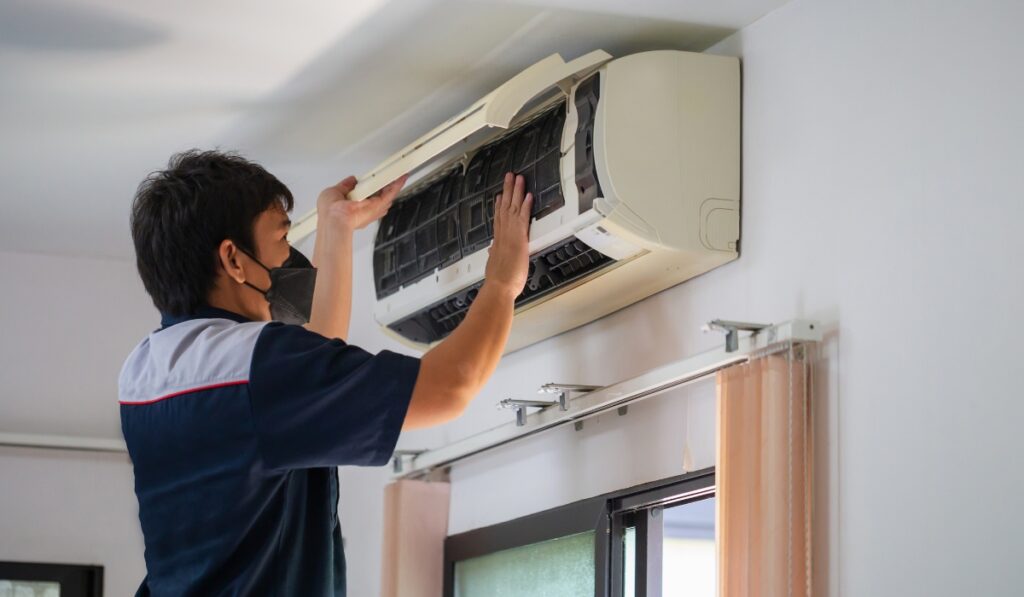Keeping your home’s air clean is essential for maintaining good health and comfort. A crucial component of achieving this is using the correct size air filter in your HVAC system. However, navigating the selection process can be confusing with the various filter dimensions available. This comprehensive guide will equip you with all the knowledge you need to identify the most common air filter sizes and ensure you choose the perfect fit for your system.
Understanding Air Filter Sizes
Before diving into specific sizes, it’s essential to understand how air filters are measured. Air filter dimensions are denoted in three numbers, each representing a specific length:
- Width: This refers to the horizontal distance across the front of the filter.
- Height: This indicates the vertical distance from the top to the bottom of the filter.
- Depth: This represents the thickness of the filter frame.
It’s important to note that air filter sizes are typically listed in nominal dimensions, rounded-up approximations of the actual measurements. The actual size may be slightly smaller than the nominal size to ensure proper fit within the HVAC system’s air filter compartment.
Most Common Residential Air Filter Sizes
Now that you understand the terminology let’s explore the most commonly encountered air filter sizes for residential HVAC systems:
- 16 x 20 x 1 inch: This compact and widely used size is ideal for smaller furnaces and air handlers.
- 20 x 20 x 1 inch: Another popular option, this size offers a good balance between airflow and filtration for mid-sized HVAC systems.
- 20 x 25 x 1 inch: This slightly larger size provides increased filter area for improved dust capture in standard-sized HVAC units.
- 16 x 25 x 1 inch: This site offers the same width as the 16 x 20 x 1-inch filter but with additional height, accommodating taller air filter compartments.
Pro Tip: Keep a spare air filter of the correct size on hand to avoid downtime between replacements.
Less Common But Still Important Air Filter Sizes

While the sizes above dominate the residential market, there are other air filter dimensions to be aware of:
- 14 x 20 x 1 inch: This size is suitable for specific furnace models and may be less readily available at retail stores.
- 18 x 24 x 1 inch: This site caters to some older HVAC systems and may require specialty retailers or online ordering.
- 12 x 20 x 1 inch and 12 x 30 x 1 inch: These slimmer filters are used in select furnace models or compact HVAC units.
If unsure about your air filter size, consult your HVAC system’s manual or refer to the existing installed filter.
Air Filter Thickness: A Consideration Beyond Dimensions
While width and height are crucial, air filter thickness (depth) is another important factor. The most common depth for residential air filters is 1 inch. However, some systems may require thicker filters, such as:
- 2-inch air filters: These thicker filters offer an increased surface area for capturing dust particles, potentially extending replacement intervals. However, they may restrict airflow if your HVAC system isn’t designed for them.
- 4-inch air filters: These heavy-duty filters provide superior filtration but require a compatible HVAC system due to their significant airflow impact.
Crucially, never try to squeeze a thicker filter into an incompatible air filter compartment. Doing so can strain your HVAC system and reduce its efficiency.
Key Factors Influencing Air Filter Size Selection
Choosing the right air filter size isn’t just about matching dimensions. Here are additional considerations to ensure optimal performance:
- HVAC system specifications: Refer to your system’s manual or consult a qualified HVAC technician for definitive size recommendations.
- Air quality concerns: If you have allergies or pets, consider using a higher-efficiency filter with a slightly smaller size to maintain adequate airflow.
- Climate: A more efficient filter may be necessary in regions with high pollen counts, potentially requiring a slight size adjustment.
Remember: While a higher-efficiency filter can improve air quality, it is essential to choose one that complements your HVAC system’s capabilities.
Don’t Forget MERV Rating: Selecting the Right Filtration Level
Beyond size, the MERV (Minimum Efficiency Reporting Value) rating is crucial for choosing an air filter. MERV ratings indicate an air filter’s ability to capture airborne particles on a scale from 1 (least efficient) to 16 (most efficient). Here’s a breakdown of standard MERV ratings and their applications for residential use:
- MERV 7-8: These filters are suitable for standard dust control in most residential settings. They capture larger particles like dust mites, pollen, and lint but may not be effective for allergens like smoke or pet dander.
- MERV 9-12: These mid-range filters offer a good balance between airflow and filtration. They effectively capture most common allergens, such as pollen, dust mites, and pet dander. The American Society of Heating, Refrigerating, and Air-Conditioning Engineers (ASHRAE) often recommends this MERV range for residential applications.
- MERV 13-16: These high-efficiency filters are designed to trap even the smallest airborne particles, including bacteria, viruses, and smoke. They are ideal for households with allergy or asthma sufferers but may restrict airflow slightly more than lower-MERV options. Before using them, it’s crucial to ensure your HVAC system can handle the airflow impact of these filters.
Choosing the Right MERV Rating:
- Standard dust control: A MERV 7-8 filter may suffice if you have minimal air quality concerns.
- Allergy and asthma sufferers: Opt for a MERV 9-12 filter for improved capture of allergens like pet dander and pollen.
- Severe allergies or respiratory issues: Consider a MERV 13-16 filter for maximum filtration, but consult an HVAC professional to ensure compatibility with your system.
Remember: A higher MERV rating doesn’t always equate to better performance. Using a filter with a MERV rating that’s too high for your HVAC system can restrict airflow, reduce efficiency, and lead to premature filter clogging.
Where to Find Your Air Filter Size and MERV Rating Information
- Air filter packaging: The size and MERV rating are typically printed on the air filter packaging.
- HVAC system manual: Your system’s manual should specify the recommended air filter size and may provide MERV rating guidance.
- Consult an HVAC technician: A qualified technician can help you determine your HVAC system’s correct size and MERV rating.
Benefits of Using the Correct Air Filter Size and MERV Rating

Using the right air filter size and MERV rating offers a multitude of benefits for your home and HVAC system:
- Improved indoor air quality: The appropriate filter effectively traps airborne contaminants, promoting a healthier breathing environment.
- Enhanced HVAC system efficiency: A correctly sized filter ensures optimal airflow, allowing your HVAC system to function efficiently and potentially reducing energy costs.
- Extended system lifespan: Proper filtration protects your HVAC system’s components from dust buildup, potentially extending its lifespan.
- Reduced maintenance needs: Regular air filter replacement minimizes dust accumulation within the system, reducing the need for frequent cleaning and maintenance.
How Often Should You Replace Your Air Filter?
The recommended air filter replacement frequency depends on several factors, including:
- MERV rating: Higher-efficiency filters (MERV 13-16) typically require more frequent replacement than lower-efficiency ones (MERV 7-8).
- Indoor air quality: If you have pets, allergies, or live in a dusty environment, consider replacing your filter more often.
- Climate: Seasonal changes with exceptionally high pollen counts may necessitate more frequent filter changes.
A general guideline:
- MERV 7-8 filters: Replace every 1-3 months.
- MERV 9-12 filters: Replace every 2-4 months.
- MERV 13-16 filters: Replace every 1-2 months.
Pro Tip: Schedule regular air filter replacements on your calendar to ensure you don’t forget.
Your Partner in Clean Air and Optimal Comfort
At TOP AC Inc., we understand the importance of clean air for your health and home comfort. Our NATE-certified technicians can help you choose the perfect air filter size and MERV rating for your HVAC system. We also offer various air filter replacement and subscription services to keep your indoor air quality at its best.
Contact TOP AC Inc. today to schedule an appointment or learn more about our air quality solutions!

